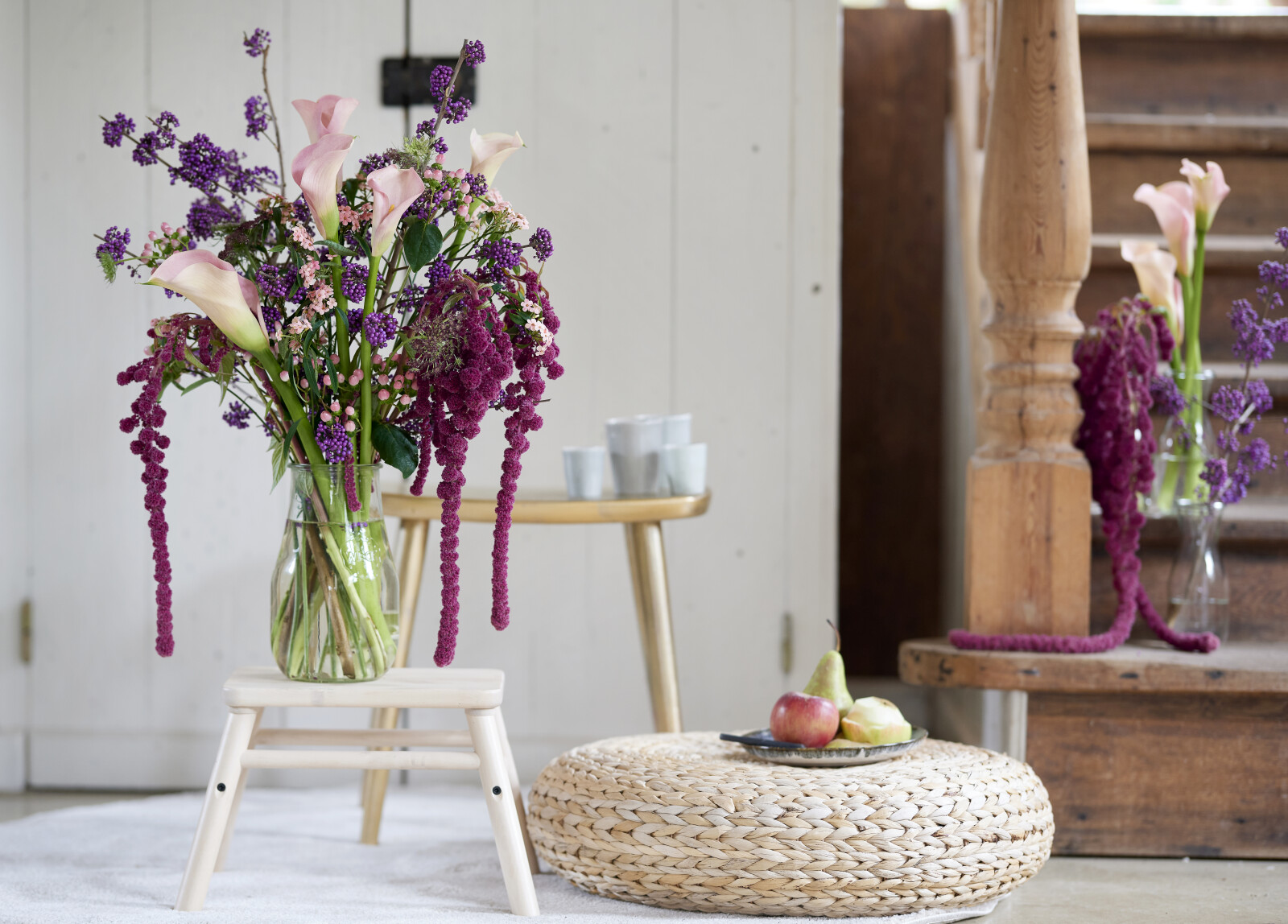Amaranthus adds movement to your arrangement

“Did you know that Amaranthus is also called cattail because of its hanging shape and soft structure?”
Some flowers add movement to an arrangement. Amaranthus is one of them. With its hanging blooms, soft texture, and almost quirky shape, this flower adds something that customers won't soon forget. In the fall, Amaranthus is an absolute mood maker: warm, elegant, and a touch dramatic.
The story behind Amaranthus
Amaranthus has a history that goes back thousands of years. In ancient times, the flower symbolized eternal love and connection. It is no coincidence that Amaranthus often appears in funeral bouquets and bridal arrangements.
The flower originally grows in tropical regions such as India, Mexico, and South America. There, it has been cultivated for centuries as a nutritious leaf and grain plant. With its velvety strands and striking appearance, Amaranthus is anything but a background plant.
What does Amaranthus do in an arrangement?
What makes Amaranthus unique is its hanging inflorescence, as if a waterfall of color is flowing out of the vase. Or, as is often said, “It looks like a cat's tail!” That's a great conversation starter at the counter. Let the flower do its thing: over the edge of a vase, between other flowers, or as a soft garland in autumnal shades.
Flowers that go well with Amaranthus:
Celosia: together they form a tropical, rich bouquet with texture and boldness. As if it were autumn.
Hypericum: sturdy and compact, as a counterbalance to the flowing shapes.
Astrantia: works beautifully as a contrast to hanging shapes.
Caring for Amaranthus: how to maintain its decorative value
Amaranthus is a flower that, with the right care, retains its decorative value for five to seven days. The flower is at its best when handled with care.
Care tips for Amaranthus:
Cut the stems at an angle. Do not use a blunt knife or pruning shears.
Amaranthus likes brightness. Change the water every other day and make sure the vase is clean.
Leaves in the water? Avoid this. Bacteria love leaves under water.
Check the water level daily: Amaranthus drinks a lot.
A flower that makes customers pause for a moment
Amaranthus is not a flower to be lost in the crowd. This flower moves and therefore deserves a place where that movement is visible. Not somewhere in the middle of an arrangement, but in a place where there is room to apply that movement.
Let the bloom hang over the edge naturally, without trying to control it. It is precisely this loose form, this natural ‘letting it happen’, that attracts attention. The closer a customer gets, the softer the structure appears. The texture is unexpected, and that makes it interesting. Especially in the fall, when the store needs atmosphere and texture, Amaranthus does exactly what you need.
Why Amaranthus is indispensable in the fall
Amaranthus is not a filler, and certainly not a background flower. This flower wants to be seen. Its shape, movement, and texture invite you to pause, look, and perhaps even feel. In an autumn bouquet, a funeral arrangement, or simply loose in a vase, Amaranthus does what few flowers do: it holds your attention. And feel free to call it ‘the cattail flower’ to a customer; it's a great conversation starter.
Looking for more combinations or inspiration? VisitAmaranthus.
View full article?
Log in or sign up for free for more inspiration
Login
- - Create your own collections
- - Get the 365 newsletter
- - Get the 365 Magazine (physical or digital!)
The '365 days of flowers' campaign is an initiative of the promotion committee 365 days of flowers, part of Royal FloraHolland. Over 1,800 growers from 15 different countries make this possible. They grow over 150 different flowers, which are promoted throughout the year based on Royal FloraHolland's availability dates. The objective of the '365 days of flowers' campaign is to jointly develop sales opportunities for florists.
Collaborate? We can be reached at [email protected] .


